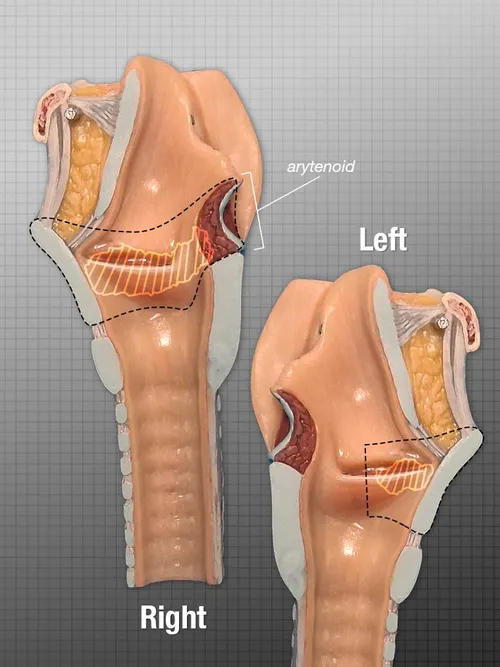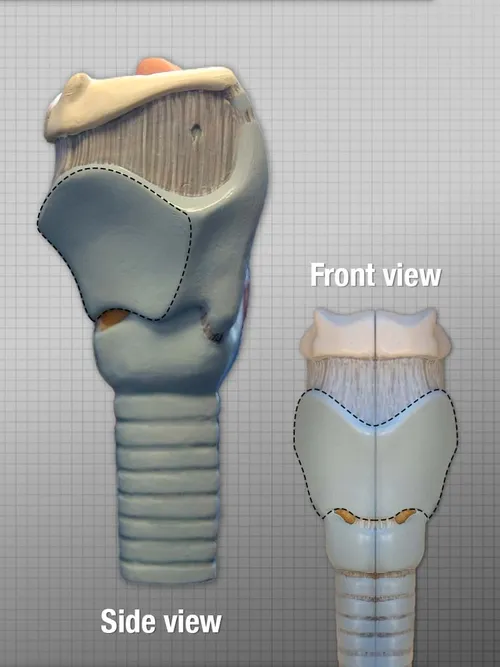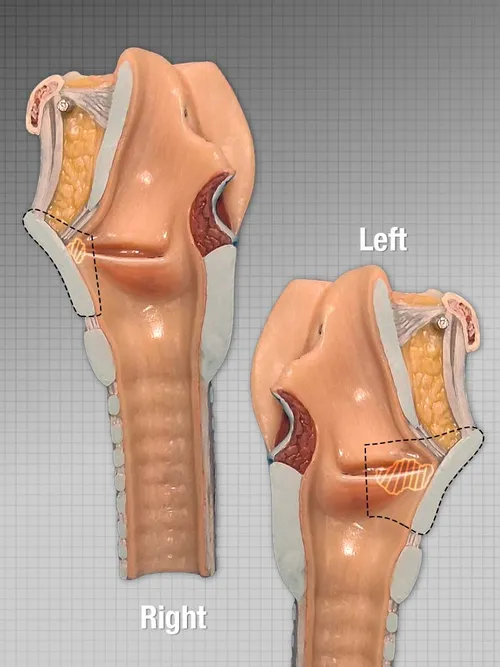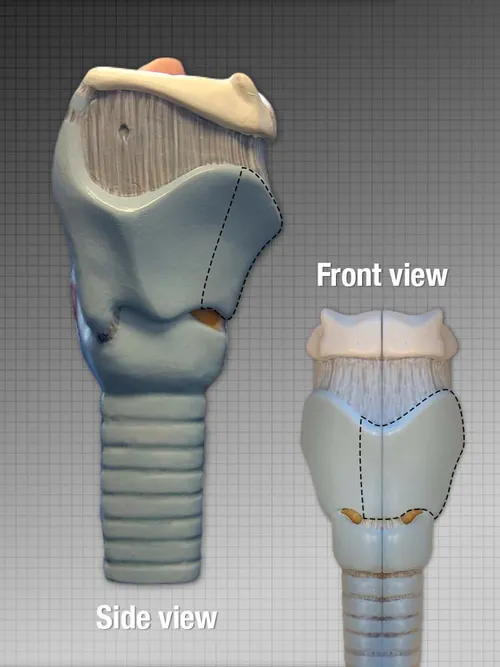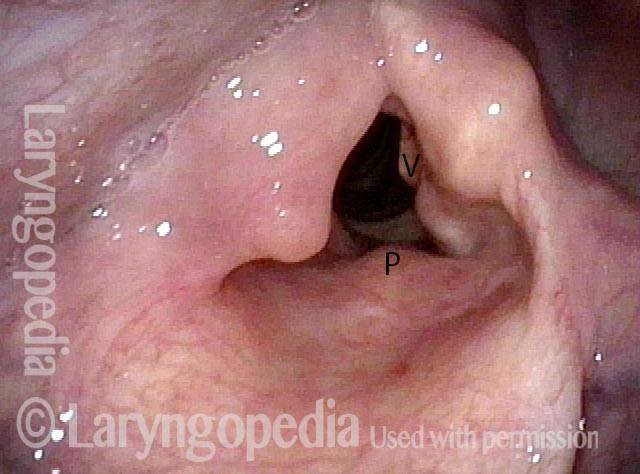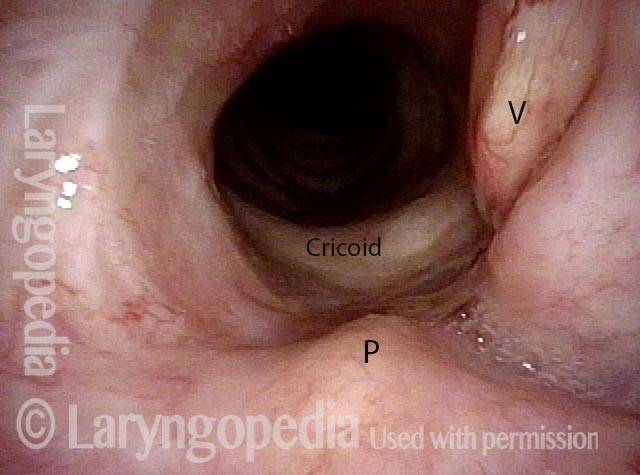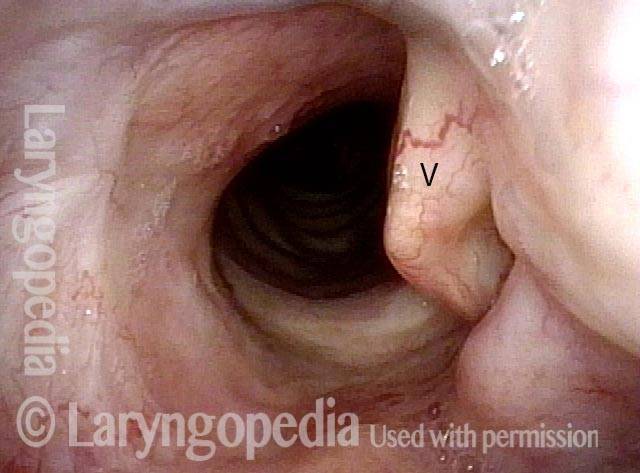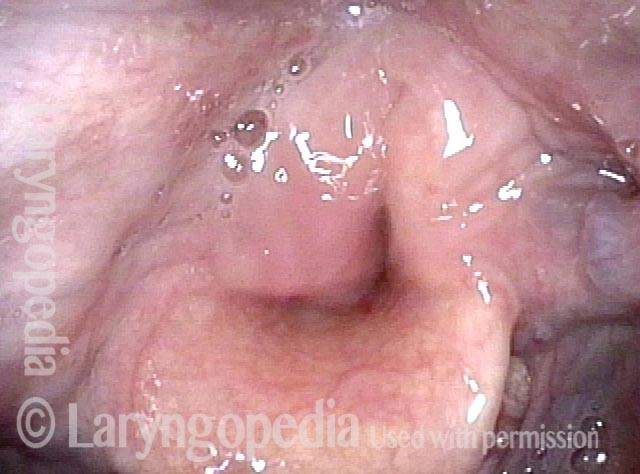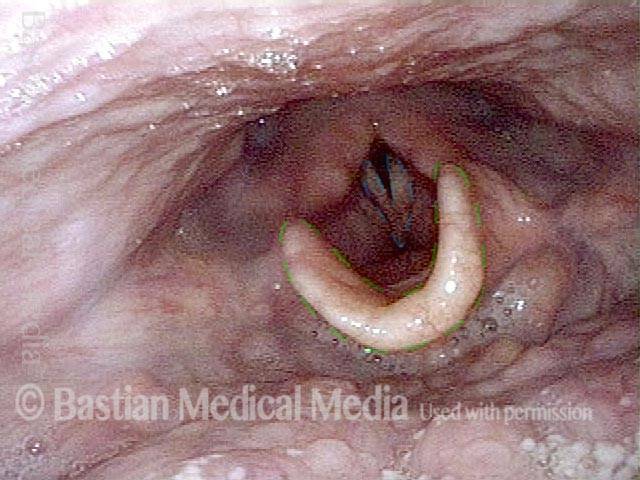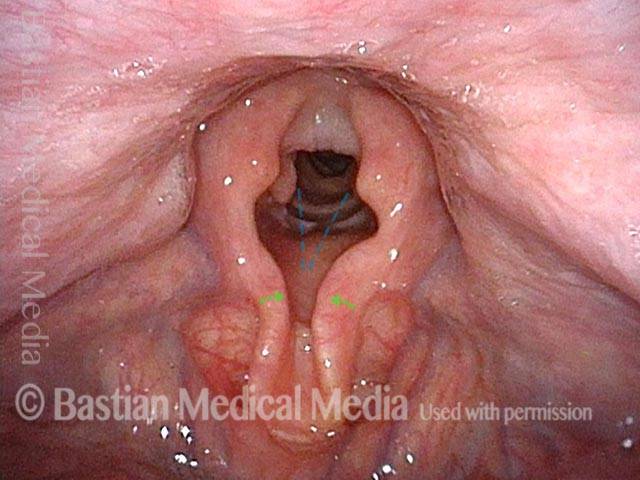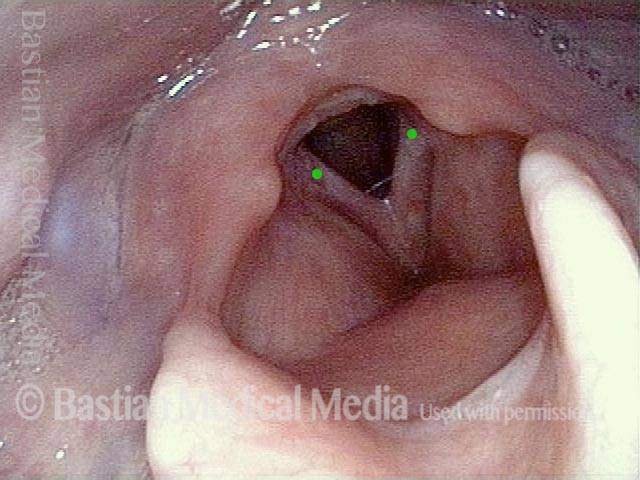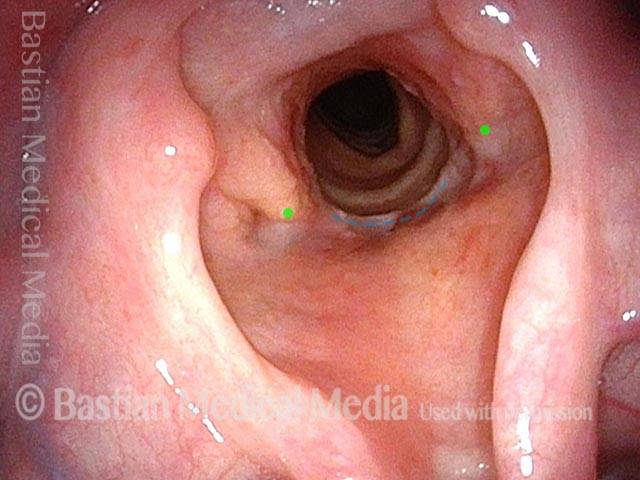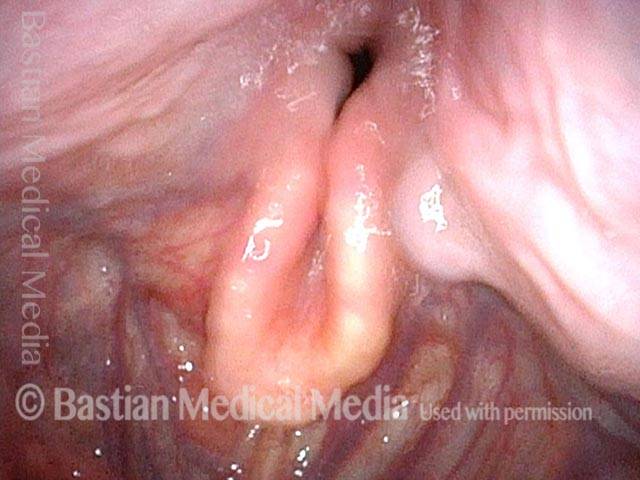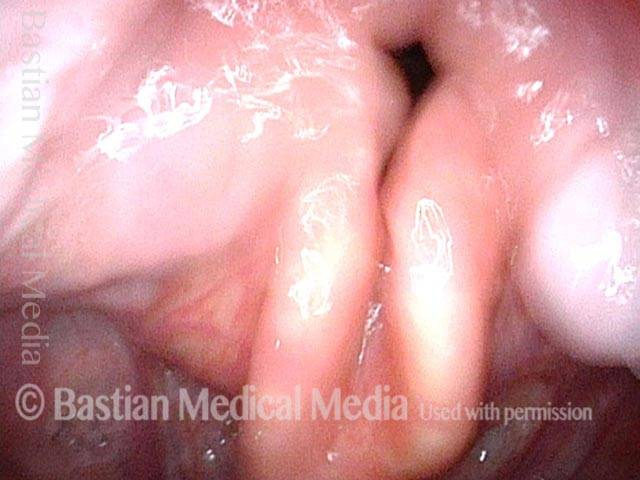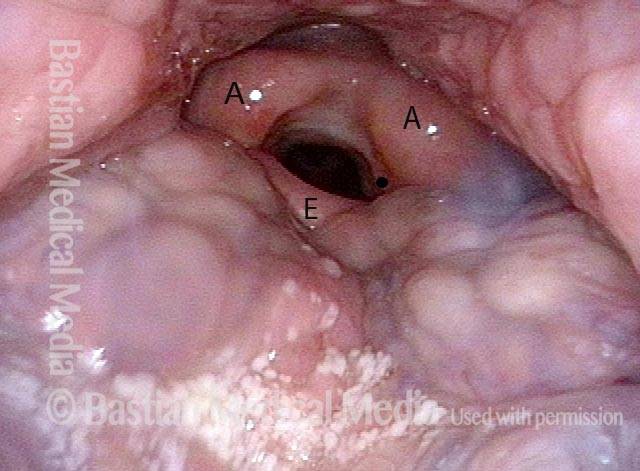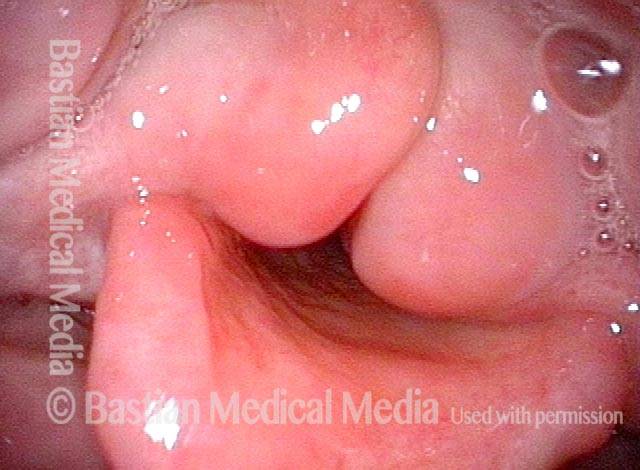Hemilaryngectomy
Hemilaryngectomy is a specific type of partial laryngectomy performed to remove a cancer of the true vocal cords. The vocal cord or cords are removed along with the overlying cartilage of the voice box as shown in the figures included in this post. Decades ago, this procedure was a primary treatment option in some clinics, for medium and large vocal cord cancers that could not be removed endoscopically (through the mouth) with a laser.
Today, when laser excision is not possible due to patient preference, difficult anatomy, or inappropriate tumor characteristics, chemotherapy and radiation therapy are usually the initial treatment choice. The biggest role for hemilaryngectomy now seems to be for carefully selected tumors (in the earlier stages, T1 through large T2) that have persisted or recurred after initial treatment of radiation therapy with or without chemotherapy.
How the Procedure Works
In a hemilaryngectomy, the surgeon removes part of the thyroid cartilage, including the underlying vocal cord or cords. The extent of removal varies to best match each individual tumor size and location. In fact, the term “hemilaryngectomy” is somewhat misleading; “hemi” means “half,” but most hemilaryngectomies remove much less than half of the larynx.
A small “hemilaryngectomy” might only remove part of one side of the thyroid cartilage with the underlying soft tissue but not touch the arytenoid cartilage. On the other hand, a very extensive procedure might remove most of both sides of the thyroid cartilage, both vocal cords, and one arytenoid, leaving the patient with only one arytenoid. Many other procedures would fall on a spectrum between these two extremes.
Types of Hemilaryngectomies
The figures below represent just two “flavors” of hemilaryngectomy for illustrative purposes. Both internal soft tissue and external cartilage cuts are varied according to the exact location and size of the tumor. Today, these procedures are considered almost exclusively for tumors that persist or recur after prior treatment (radiation or radiation + chemotherapy).
“Maximal” Hemilaryngectomy (Radical Bilateral Hemilaryngectomy with arytenoidectomy)
Fronto-lateral Hemilaryngectomy (without Arytenoidectomy)
Anterior-Posterior Supraglottic / Arytenoid Mucosa Vibration Against the Epiglottis
Panoramic view (1 of 4)
Panoramic view (1 of 4)
Interior of larynx (2 of 4)
Interior of larynx (2 of 4)
Phonation (3 of 4)
Phonation (3 of 4)
“Wolfman Jack” voice (4 of 4)
“Wolfman Jack” voice (4 of 4)
Hemilaryngectomy and Modified Epiglottic Laryngoplasty, Before and After
Panoramic view (1 of 6)
Panoramic view (1 of 6)
Post hemilaryngectomy (2 of 6)
Post hemilaryngectomy (2 of 6)
Pre-hemilaryngectomy (3 of 6)
Pre-hemilaryngectomy (3 of 6)
Post-hemilaryngectomy (4 of 6)
Post-hemilaryngectomy (4 of 6)
Phonation (5 of 6)
Phonation (5 of 6)
Closer view (6 of 6)
Closer view (6 of 6)
Another Voice Without Vocal Cords
Hemilaryngectomy (1 of 4)
Hemilaryngectomy (1 of 4)
Within the larynx (2 of 4)
Within the larynx (2 of 4)
“Wolfman Jack” voice (3 of 4)
“Wolfman Jack” voice (3 of 4)
Arytenoid vibration (4 of 4)
Arytenoid vibration (4 of 4)
Share this article
